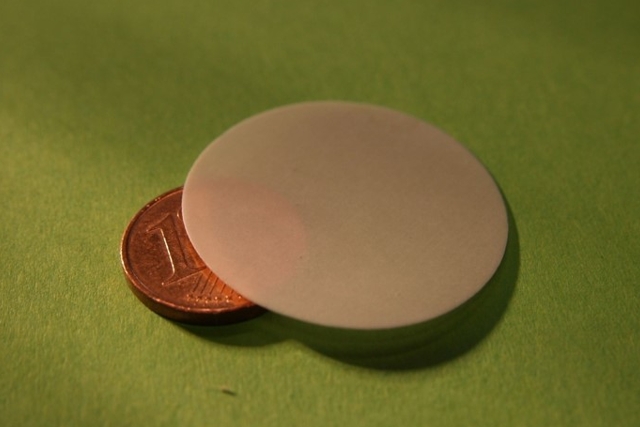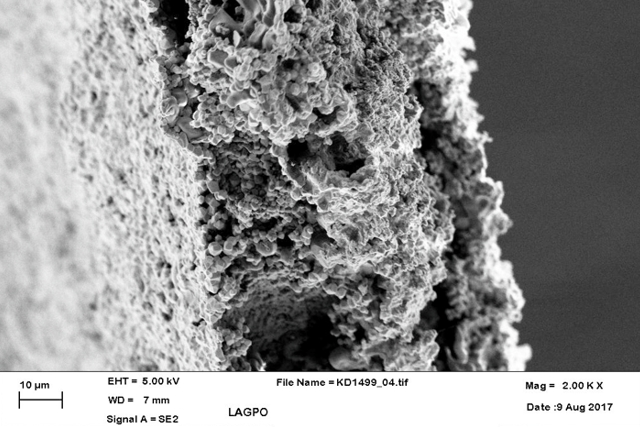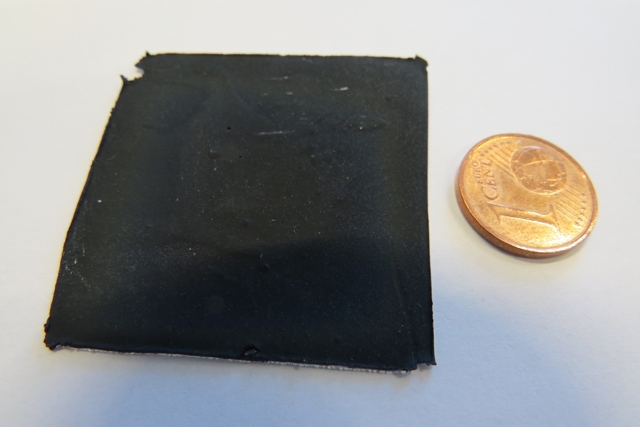Solid electrolyte systems from ion-conducting glasses and glass ceramics

Solid electrolyte based on glass ceramic. Mechanically ground to a thickness of approx. 160 µm.

SEM image on fracture surface of cast electrolyte foil.

Co-sintering of electrolyte and electrode.
Method of manufacturing glasses
- Starting material in powder form
- Weighing and mixing
- Temperature treatment in the melting furnace
- Shaping with quenching
- Oxidic ion-conducting glasses (e.g. phosphate glasses and borate glasses)
- Conductivity > 10-6 S/cm
Method of manufacturing glass-ceramics
- Glass (e.g. NaSiCon-like composition)
- Temperature treatment (nucleation and crystallization)
- Glass ceramic with adjustable microstructure
- Conductivity > 10-4 S/cm
Further processing in powder form
- For purely inorganic electrolytes (e.g. in thin layers)
- For the production of electrode components (composites of active material, ionic conductors, electron conductors)
- For hybrid electrolytes (e.g. with ORMOCER® binder)
